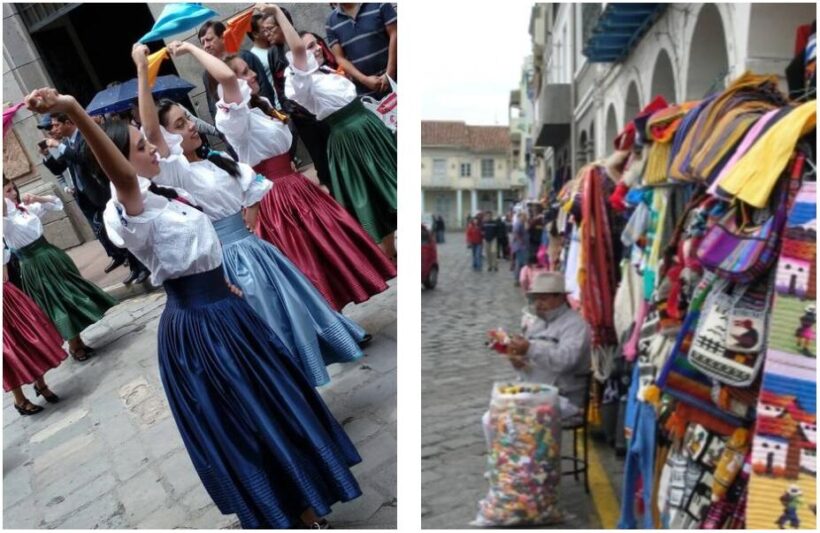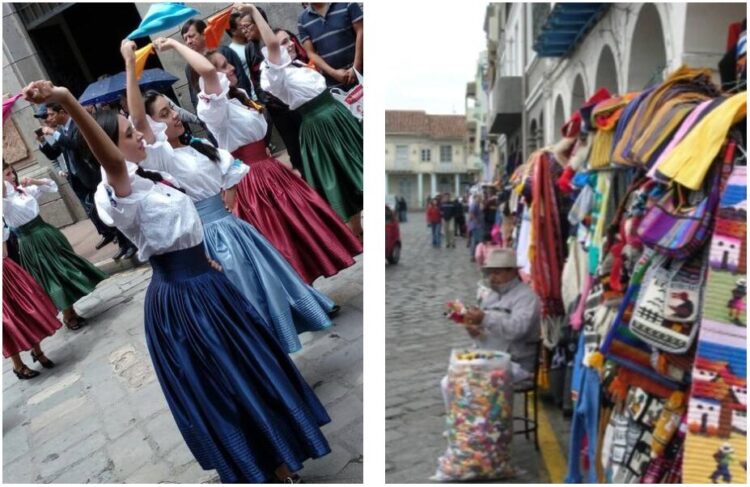Since the Spanish conquest, cultural life in Ecuador has been characterized by the confrontation of two cultural areas: the European and the Indian cultural area. For about a decade, indigenous groups have shown themselves to be an emerging new political force.
Number of literate adults: 94%
Major religions: Catholicism 95%, Protestantism 2%, other 3%
Urban population: 64%
Life expectancy: 73.8 years (men), 79.9 years (women)
Gender Inequality Index: Rank 86 (of 189)
Number of births: 2.49 / woman
Child mortality: 16.9 / 1000 live births
Ethnic structure
In the past few decades, indigenous groups in Latin America in general, and in Ecuador in particular, have undergone significant developments from marginalized populations in society to major social and political movements. The indigenous people have always been viewed by the various governments as an insignificant minority, although, depending on the statistical survey, they make up 20-50% of the population. For about a decade they have shown themselves to be an emerging political force and spearhead of social movements in Ecuador. Their interests are in the political system of the Pachakutik party(“Turn of Time”) represented. Indigenous leaders now sit in parliament and in various municipalities. In the 2017 National Assembly elections, Pachakutik won four seats.
The “Confederation of Indigenous Nationalities of Ecuador” (CONAIE), founded in 1986, has contributed to the relative improvement of the social position of the indigenous population group. Over the past few years, CONAIE has not only succeeded in raising awareness and awareness of the problems of the indigenous population, but has also specifically improved the socio-political situation of the indigenous people.
The Afro-Ecuadorians, about 5% of the population of Ecuador, represent the most disadvantaged and discriminated social group. For centuries the Afro-Ecuadorians have been enslaved, marginalized and hushed up.
On the other hand, the population group of Lebanese and other Arab immigrants and their descendants, who have settled in the Ecuadorian coastal region since the end of the 19th century, are on the sunny side of society. There are only 75 families in total, but they have a large share of the country’s economic and political power. The ex-presidents Abdalá Bucaram and Jamil Mahuad also belong to this group.
Cultural conflicts
Since the Spanish conquest, cultural life in Ecuador has been characterized by the confrontation of two cultures: the European one and the Indian one. Later immigrants created a new dynamic center on the coast (Guayaquil), which competes with the traditional, historic capital (Quito) in the Sierra. These conflicts are overlaid by another ethnic expression. The indigenous – rather rural – population is viewed as “inferior” by the white “Creole” urban population. Only the self-confident appearance of the indigenous population in the 1990’s seems to have made a contribution to overcoming this problem.
Situation of women
Under constitutional law, women in Ecuador, a country located in northwestern part of South America according to ehistorylib, were initially granted limited voting rights in 1929, and the country was a pioneer in this regard in the region. In 1967 these restrictions were lifted and women were given full voting rights. Various quota regulations have been introduced in recent years. In the elections to the Constituent Assembly in 2007, the quota for women was raised to 50 percent and an alternating system (man – woman – man, etc.) was stipulated for drawing up the electoral lists.
On the one hand, Ecuador has strengthened women’s rights in recent years and signed all international agreements in this regard. Many reforms for women have been initiated in recent years. Among other things, a “Comisaría de la mujer” was set up, a state authority that grants women help in all kinds of personal problem situations and legal assistance. The government therefore speaks of a significant improvement in the socio-economic situation of women in the country. In 2015, the government launched an action to combat violence against women. Overall, women in Ecuadorian society continue to be disadvantaged – this is especially true for indigenous women. The statistics authority of Ecuador provides current statistics and census data.
Human rights
The Ecuador Report 2017/18 by Amnesty International provides inter alia that “indigenous leaders, human rights defenders and staff of NGOs to prosecution and harassment have faced, and there were still restrictions on the rights to freedom of expression and association.” However, the constitution, which is considered to be one of the most progressive on the continent in the social field, has helped to strengthen human rights. Above all, Freedom House criticizes clear tendencies towards a restriction of the freedom of the press and also reports of multiple attacks on journalists. In August 2019, Latin American politicians and intellectuals issued an appeal warning against the decline of civil and human rights under Lenín Moreno. They wait for central institutions of Ecuadorian participatory democracy to be systematically destroyed. In the same month, the government-critical Internet platform Ecuador Inmediato (EI) stopped its work after 15 years in “protest against restrictions on freedom of expression in Ecuador”.

